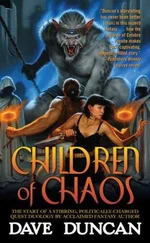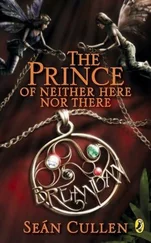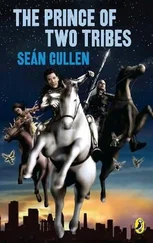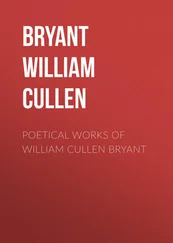8. Maximum Human Density

It’s a safe bet that Eric and Dylan watched the carnage of Waco and Oklahoma City on television, with the rest of the country. Those atrocities were particularly prominent in this region. McVeigh was tried in federal court in downtown Denver and sentenced to death while the boys attended Columbine in the suburbs. The scenes of devastation were played over and over. In his journal, Eric would brag about topping McVeigh. Oklahoma City was a one-note performance: McVeigh set his timer and walked away; he didn’t even see his spectacle unfold. Eric dreamed much bigger than that.
Judgment Day, they called it. Columbine would erupt with an explosion, too. Eric designed at least seven big bombs, working off The Anarchist Cookbook he found on the Web. He chose the barbecue design: standard propane tanks, the fat, round white ones, eighteen inches tall, a foot in diameter, packing some twenty pounds of highly explosive gas. Bomb #1 employed aerosol cans for detonators, each wired up to an old-fashioned alarm clock with round metal bells on top. Step one was planting them in a park near Eric’s house, three miles from the school. That bomb could kill hundreds of people but was intended for only stones and trees. The attack was to begin with a decoy: rock the neighborhood and divert police. Every free minute raised the potential body count. The boys were going to double or triple McVeigh’s record. They estimated the damage variously as “hundreds,” “several hundred,” and “at least four hundred”—oddly conservative for the arsenal they were preparing.
Eric may have had another reason for the decoy plan. He was uncannily perceptive about people, and Dylan had been wavering. If Dylan was reticent, the decoy would help ease him in. It was a harmless explosive, no one would be hurt by it, but once they drove off, Dylan would be committed.
The main event was scripted in three acts, just like a movie. It would kick off with a massive explosion in the commons. More than six hundred students swarmed in at the start of “A” lunch, and two minutes after the bell rang, most of them would be dead. Act I featured two bombs, using propane tanks like the decoy. Each was strung with nails and BBs for shrapnel, lashed to a full gasoline can and a smaller propane tank, and wired to similar bell clocks. Each bomb fit snugly into a duffel bag, which Eric and Dylan would lug in at the height of passing-period chaos. Again, Dylan was eased into killing. Clicking over the alarm hinge was bloodless and impersonal. It didn’t feel like killing—no blood, no screams. Most of Dylan’s murders would be over before he faced them.
The fireball would wipe out most of the lunch crowd and set the school ablaze. Eric drew detailed diagrams. He spaced the bombs out but located them centrally, for maximum killing radius. They would sit beside two thick columns supporting the second floor. Computer modeling and field tests would later demonstrate a high probability that the bombs would have collapsed some of the second floor. Eric apparently hoped to watch the library and its inhabitants crash down upon the flaming lunchers.
As the time bombs ticked down, the killers would exit briskly and flare out across the parking lot at a ninety-degree angle. Each boy was to head for his own car, strategically parked about a hundred yards apart. The cars provided mobile base camps, where they would gear up to unleash Act II. Pre-positioning ensured optimal fire lanes. They had drilled the gear-ups repeatedly and could execute them rapidly. The bombs would detonate at 11:17, and the densely packed wing would crumble. As the flames leapt up, Eric and Dylan would train their semiautomatics on the exits and await survivors.
Act II: firing time. This was going to be fun. Dylan would sport an Intratec TEC-DC9 (a 9mm semiautomatic handgun) and a shotgun. Eric had a Hi-Point 9mm carbine rifle and a shotgun. They’d sawed the barrels off the shotguns for concealment. Between them, they’d carry eighty portable explosives—pipe bombs and carbon dioxide bombs that Eric called “crickets”—plus a supply of Molotov cocktails and an assortment of freakish knives, in case it came down to hand-to-hand combat. They’d suit up in infantry-style web harnesses, allowing them to strap much of the ammo and explosives to their bodies. Each had a backpack and a duffel bag to hump more hardware into the attack zone. They would tape flint matchstriker strips to their forearms for rapid-fire pipe-bomb attacks. Their long black dusters would go on last—for concealment and for looking badass. (Later, the dusters were widely referred to as trench coats.)
They planned to advance on the building as soon as the bombs blew. They’d be set back far enough to see each other around the corner—and just barely avoid the blast. They had devised their own hand signals to communicate. Every detail was planned; battle positions were imperative. The 250,000-square-foot school had twenty-five exits, so some survivors would escape. The boys could remain in visual contact and still cover two sides of the building, including two of the three main exits. Their firing lines intersected on the most important point: the student entrance, adjacent to the commons and just a dozen yards from the big bombs.
Positioning yourself at a right angle to the objective is standard U.S. infantry practice, taught to every American foot soldier at the Infantry School in Fort Benning, Georgia. Interlocking fire lanes, the military calls it. The target is constantly under fire from two sides, yet the assault team’s weapons are never pointed at confederates. Even if a shooter turns sharply to peg an escaping enemy, his squad mates are safe. From their initial positions, Eric and Dylan could sweep their gun barrels across a ninety-degree firing radius without endangering each other. Even if one shooter advanced more quickly, he would never violate his partner’s fire lane. It is both the safest and the most effective assault pattern of modern small-arms warfare.
This was the phase Eric and Dylan were savoring. It was also when they expected to die. They had little hope of witnessing Act III. Forty-five minutes after the initial blast, when the cops declared it was over, paramedics started loading amputees into ambulances, and reporters broadcast the horror to a riveted nation, Eric’s Honda and Dylan’s BMW would rip right through the camera crews and the first responders. Each car was to be loaded with two more propane devices and twenty gallons of gasoline in an assortment of orange plastic jugs. Their positions had been chosen to maximize both the firepower in Act II and the carnage in Act III. The cars would be close to the building, near the main exits—ideal locations for police command, emergency medical staging, and news vans. They would be just far enough from the building and each other to wipe out most of the junior and senior parking lots. Maximum body count: nearly 2,000 students, plus 150 faculty and staff, plus who knows how many police, paramedics, and journalists.
Eric and Dylan had been considering a killing spree for at least a year and a half. They had settled on the approximate time and location a year out: April, in the commons. They finalized details as Judgment Day approached: Monday, April 19. The date appeared firm. The boys referred to it twice matter-of-factly in the recordings they made in the last ten days. They did not explain the choice, though Eric discussed topping Oklahoma City, so they may have been planning to echo that anniversary, as Tim McVeigh had done with Waco.
The moment of attack was critical. Students liked to eat early, so “A” lunch was the most popular. The maximum human density anywhere, anytime in the high school occurred in the commons at 11:17. Eric knew the exact minute because he had inventoried his targets. He’d counted just 60 to 80 kids scattered about the commons from 10:30 to 10:50. Between 10:56 and 10:58, “lunch ladies bring out shit,” he wrote. Then lunch door 2 opened, and a “steady trickle of people” appeared. He recorded the exact moment each door opened, and body counts in minute-by-minute increments. At 11:10, the bell rang, fourth period ended, students piled into the hallways. Moments later, they rushed the lunch lines, fifty more every minute: 300, 350, 400, 450, 500-plus by 11:15. Eric and Dylan’s various handwritten timelines show the bombs scheduled to explode between 11:16 and 11:18. The final times are followed by little quips: “Have fun!” and “HA HA HA.”
Читать дальше








